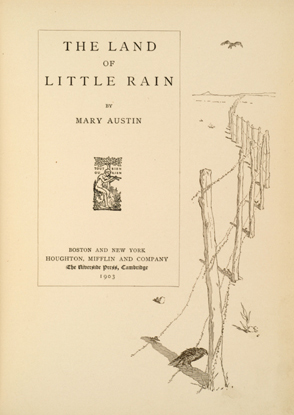What a long, spiderless season it’s been.
Winter was creepy-weird: 90 degrees in January, brutally dry, sun beaming down on dead annuals, leafless trees, comatose landscaping. The East and Midwest were buried in blizzard after blizzard, so we had no right to complain, but in the West each rainless day was another drip in a sort of waterless water torture.
And then spring lurched into summer with no preamble, except for the plants that (seemingly) miraculously sprang back to life to offer the mask of a normal California year. Since then it’s been months of broken rhythm and mocking sunshine.
Every living thing is still off. Plants bloomed too early or too late. The comforting reserves of water we use to beat back the desert—and it’s all desert, pretty much—no longer wait behind hose or faucet. On a recent road trip passing through the hazy-hot Salinas Valley, the hills were not golden. They were gray.
What you learn from skilled news reporters: historically, droughts in California have been known to last for long years, sometimes decades. Though not since modern recordkeeping began, which is why we’re all so gobsmacked by the seriousness of it. But in archaeological records, sure, plenty of evidence of drought wiping the shine off the Golden State. A state now so foolishly full of grass, golf courses, recreational lakes, orchards, and other thirsty things.
You also learn that ocean temperatures thousands of miles away, far off in the Pacific, are shuffling the cards you’ll be holding in fall, when the rains might or might not return. The view from my dead lawn is too small, in both time and distance, to take it in.
What it means for spiders is that I’ve seen very few. Insects, too, other than bees and mosquitoes. The county is fogging for West Nile virus vectors, which means the mosquitoes will diminish as well—something I’d normally applaud, but this year we all seem acutely aware of how missing bugs mean fewer birds, fewer green and growing things, fewer signs of life.
You get a better sense of who the survivors are. The cellar spiders, they never seem to go away; perhaps they’re generalist enough and skinny enough to survive on whatever blunders along. In our micro-ecosystem they probably benefit from the earthworm bin, which breeds tiny flies, and the mealworm boxes (kept for the geckos), where the flour moths roam. Flying fodder eventually comes their way.
And the widows: they’re stationed along the fence posts and in the downspouts just as they always have been. Maybe a tad smaller, but the summer is young and there’s still time to grow round. I go out at night and assess them by flashlight. Drought is nothing to them. Widows like it hot and dry; the females keep cool in their all-black outfits by the simple trick of being nocturnal. The small, loitering males await their moment.
Otherwise the spider places seem oddly empty. I haven’t spotted even a young orb weaver yet, much less one of the large females knitting her radial web. The wolf spiders you find by following their eye shine: where are they? Almost absent from the lush leaf litter where they usually live. Lumbering Zoropsis, the big Mediterranean hitchhiker, also has been lying low.
I met a tiny bronze jumping spider last week, let it hop around a few minutes, then freed it and wished it luck.
 The most notable absence in our domain is of false widows (Steatoda grossa). We’ve always had lots of them hanging around the flowerpots and crevices. This year I’m concluding they could be a sort of indicator species in our microclimate, a signal of what being less wet, less buggy, might mean. They’re pert, glossy spiders that have never caused us a bit of harm, and I would miss them. But they’re a worldwide species and could easily take a California habitat retreat in stride. More easily than we could.
The most notable absence in our domain is of false widows (Steatoda grossa). We’ve always had lots of them hanging around the flowerpots and crevices. This year I’m concluding they could be a sort of indicator species in our microclimate, a signal of what being less wet, less buggy, might mean. They’re pert, glossy spiders that have never caused us a bit of harm, and I would miss them. But they’re a worldwide species and could easily take a California habitat retreat in stride. More easily than we could.
We have short memories here. It’s part of our charm—that disappointment never chases you too far. There’s always going to be summer, and always going to be the rains. Or so we think. Me, I’m going to take down my old copy of a tiny book called The Land of Little Rain. Mary Austin tramped around desert California—lands people admire and fear, lands that change (if at all) only over thousands of years. She found it beautiful, and aloof, and surpassingly skillful at teaching humans their place. It might be time to build longer memories.